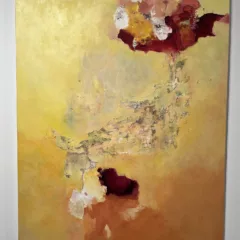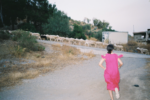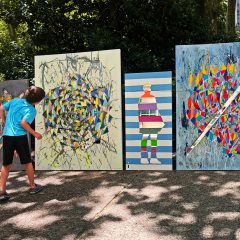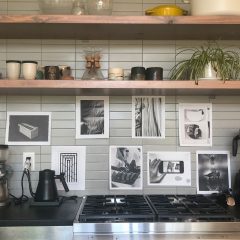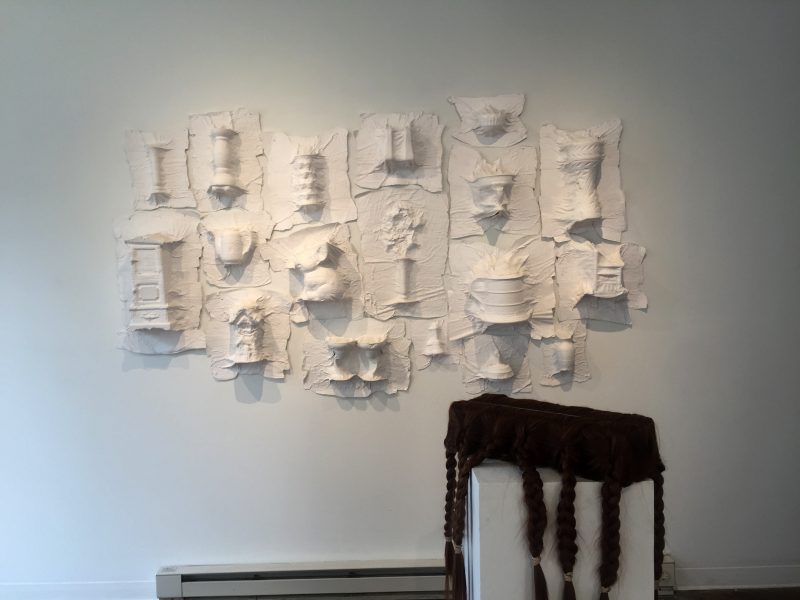
The phrase “additional assembly required” often indicates a headache to come: the stress of following vague directions, or wondering where you put that final missing screw. However, AUTOMAT’s 2019 open call is approachable – whimsical, even – and brings a lighter side to Additional Assembly Required.
Chosen from 150 submissions, the exhibition includes work from six artists: Julia Betts, Kate Gorman, Jonathan Korotko, Jason Lake, Natasha Le Sourd, and Jacqueline Tull. All of the works have a distinct materiality, from Korotko’s neon-colored yarn, to Le Sourd’s hair sculpture, to the intriguing mass of paper that makes up Betts’s central installation. Advertised as a “tactile journey,” the intimate show lives up to the description. During my visit, I was at times intrigued, confused, disgusted, and even humored by the selection of materials and their odd combinations. The apparent simplicity of the accessible materials used by the group of artists verges on an endearing craftiness, but each object maintains a distinct integrity through the artists’ meticulous and thoughtful use of homey objects.
At AUTOMAT, the 8 works on view are each able to shine. The space is large enough to give each artwork breathing room, while still allowing relationships between works to form. The positioning of Koroto and Le Sourd’s works near one-another ties together their unusual materials. Korotko’s yarn-based work “If I Let You In, Who Would Know?” is a standout in both texture and color. The near-neon yarn has a toxicity about it, but the form is sensual and captivating, and the apparent softness of the material made me want to reach out and stroke. Le Sourd’s “Untitled” (2019) includes both real and fake pearls – a move that felt sneaky, but made me look at the work with a rigorous intensity. I was determined to identify the real pears among the beads, unfortunately to no avail.
Jason Lake’s “Public Itch” made me laugh out loud. At the push of a button, the object begins to move, animating in such a way that it appears as though the female-implied sculpture is scratching its pubic hair – and doing so rather clumsily. There was something almost pedophilic in the enabling of the public display, but it also felt funny, and – to make things even more complicated – the honesty of seeing a “woman” attend to her scratch needs (rather than the frequent male-adjusting that we are all prone to witness) was satisfying. The allusion to a female form, rather than a truly life-like representation, likely aided in this twisted, satisfying discomfort. The more I think about it, the more I like it.
The works of Kate Gorman and Jaqueline Tull are subtler. In mostly-neutral tones, these artists cleverly render absence. Gorman’s layered textile works (“Color Blindness” and “Birds and Aircraft”) are difficult objects. Both feature an embriodered piece of fabric, hung with ribbon from a metal bar. The metal support gives the hanging piece a ghostly quality, and the titles reinforce this sense of a lack of something: in “Color Blindness” a lack of vision; in “Birds and Aircraft” a lack of clarity of being able to pick out these titular objects. Tull’s works make the missing obvious. “Death Masks” is an installation of plaster casts hung on a wall. To me, all of the casts of vases, teapots, candlesticks felt very antique. I could imagine each of the missing objects at my grandmother’s house. The piece struck me as a physical representation of memory. The title, “Death Masks” continues this sense of haunting.
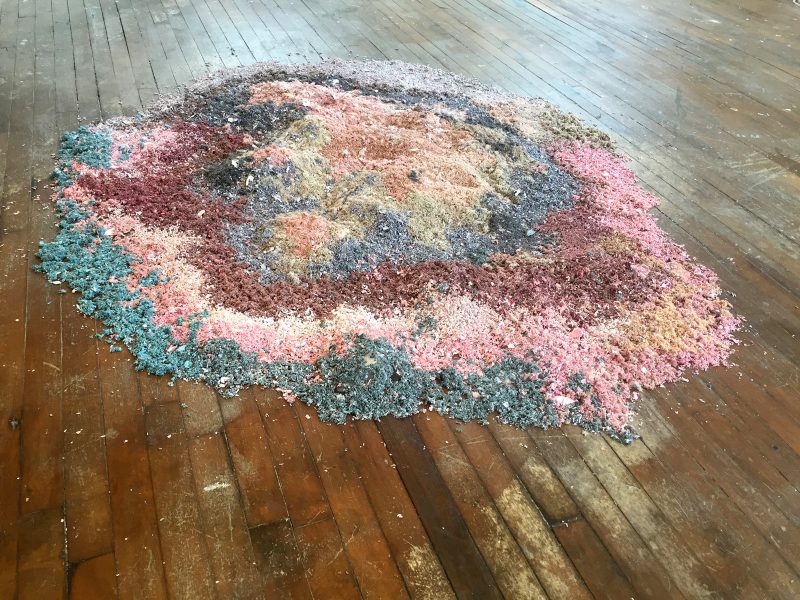
Memory carries through to the final object in the exhibition. At the center of the gallery lies Julia Betts’s “Detritus.” This fabulous pile of shredded photographs felt to me like a black hole – constantly my attention was drawn to its strangeness as I looked at the other objects. The installation of “Detritus” is like a physical map of some alien landscape – molten, rocky, perhaps liquid in some places. It is elemental and playful – I both wanted to reach out and touch it, and worried about what might happen if I did. Upon closer inspection, the shredded paper reminded me of a sandbox, or even the paper in a rodent cage. Certainly, I thought as I walked around “Detritus,” this piece embodies the idea of Additional Assembly Required. It would require more patience than any Ikea table would to build: collecting tiny shreds of memory and taping them back into a cohesive image. And yet, while it came unassembled, this artwork also serves as the instruction book for the rest of the show. It helped me make connections to the colors, forms, and feelings of the other artworks. As I stood by the installation, I imagined that perhaps the scraps in “Detritus” contain pieces of the other works: a shred of a woman’s torso, a strand of hair, a car, a vase, a pearl – all caught on camera.
“Additional Assembly Required,” AUTOMAT, July 5, 2019 – August 24, 2019


